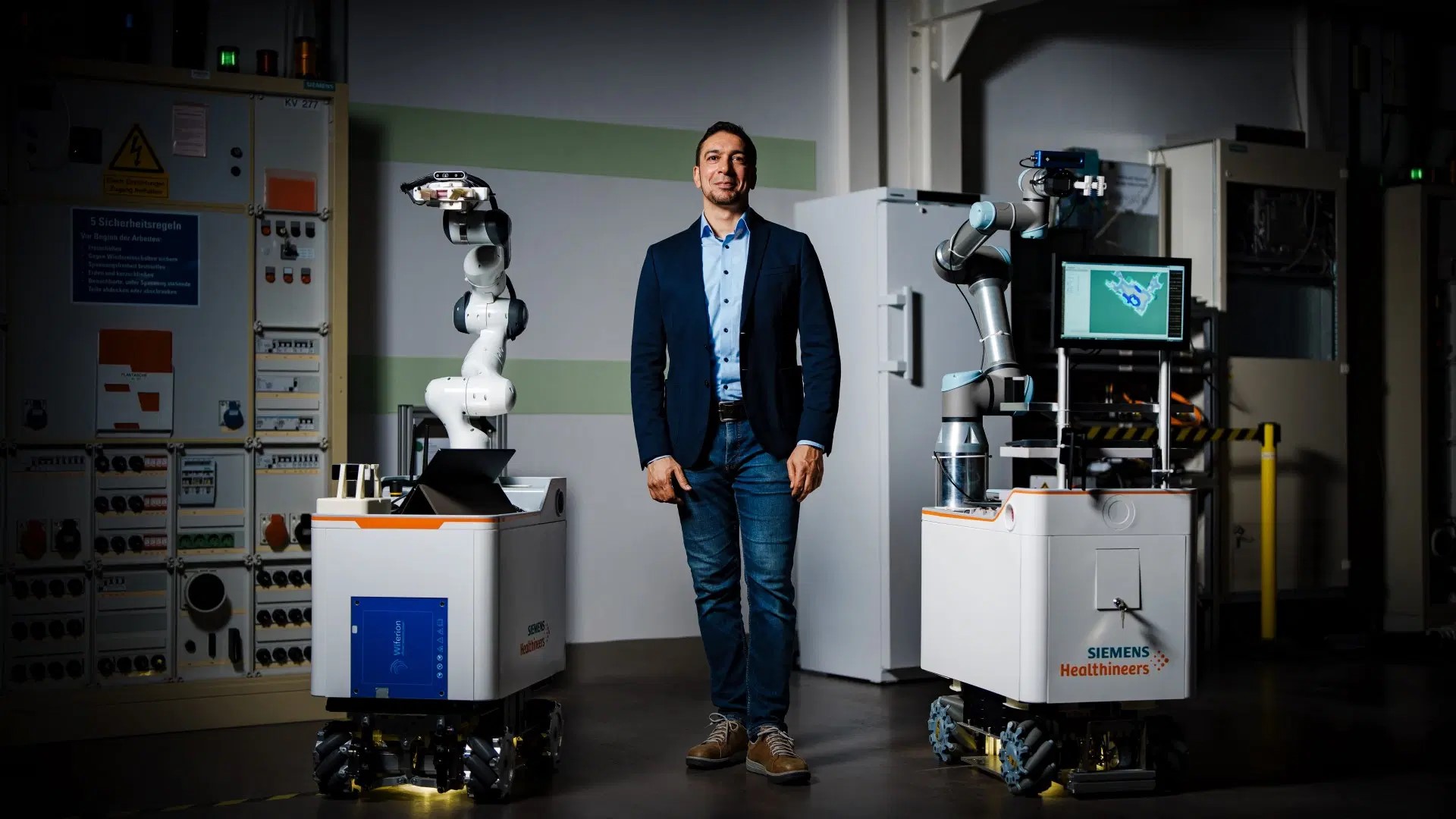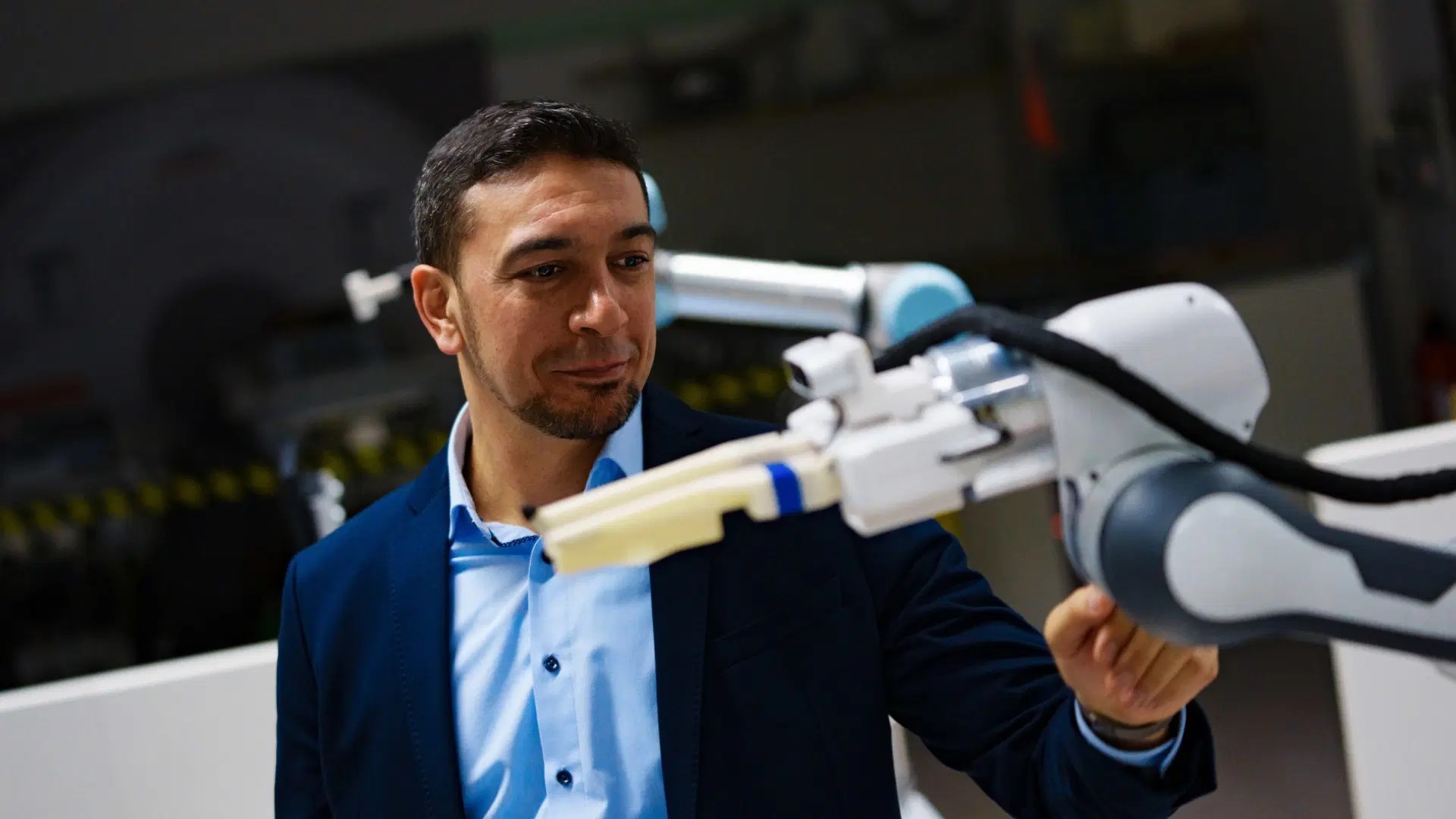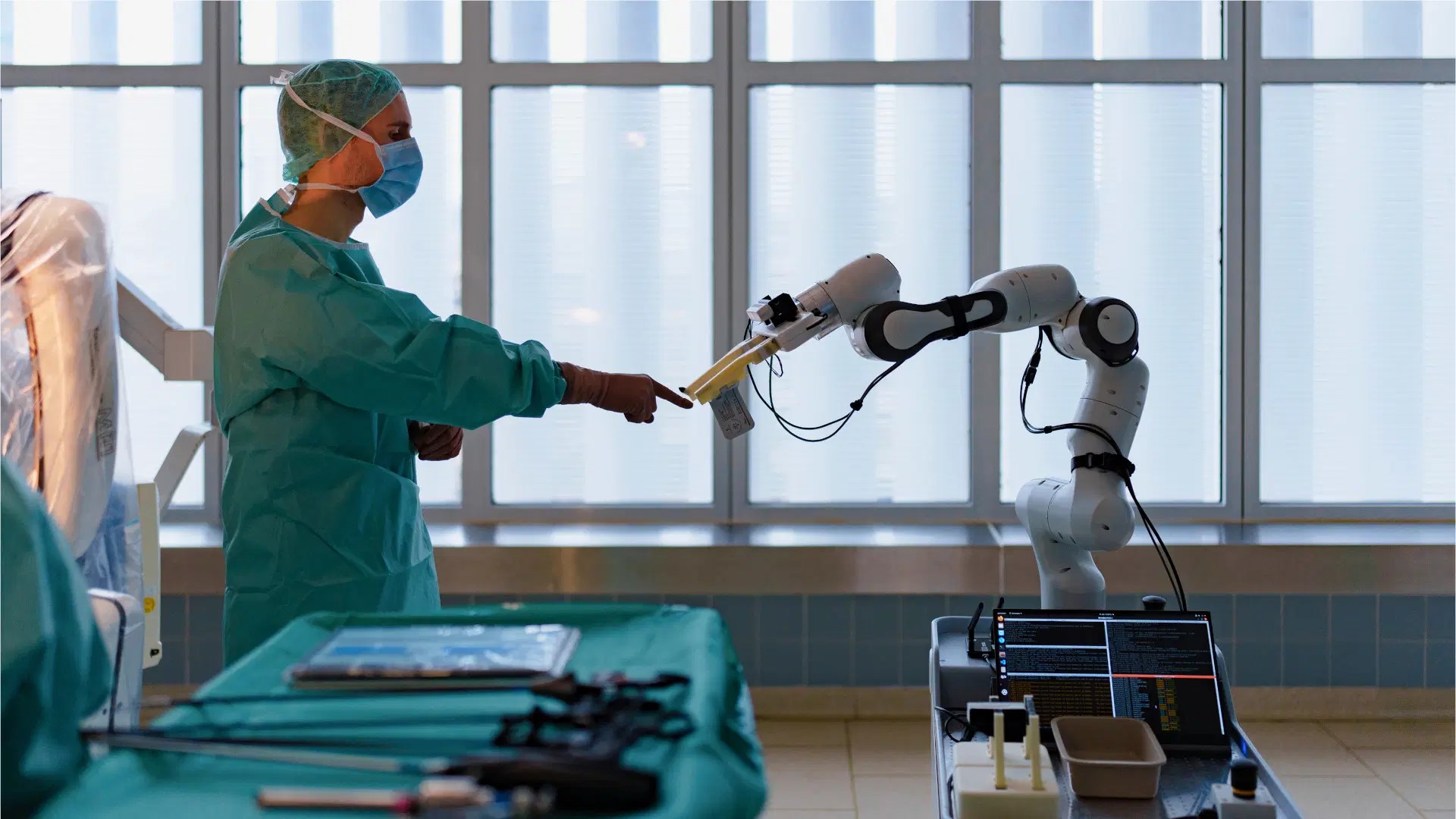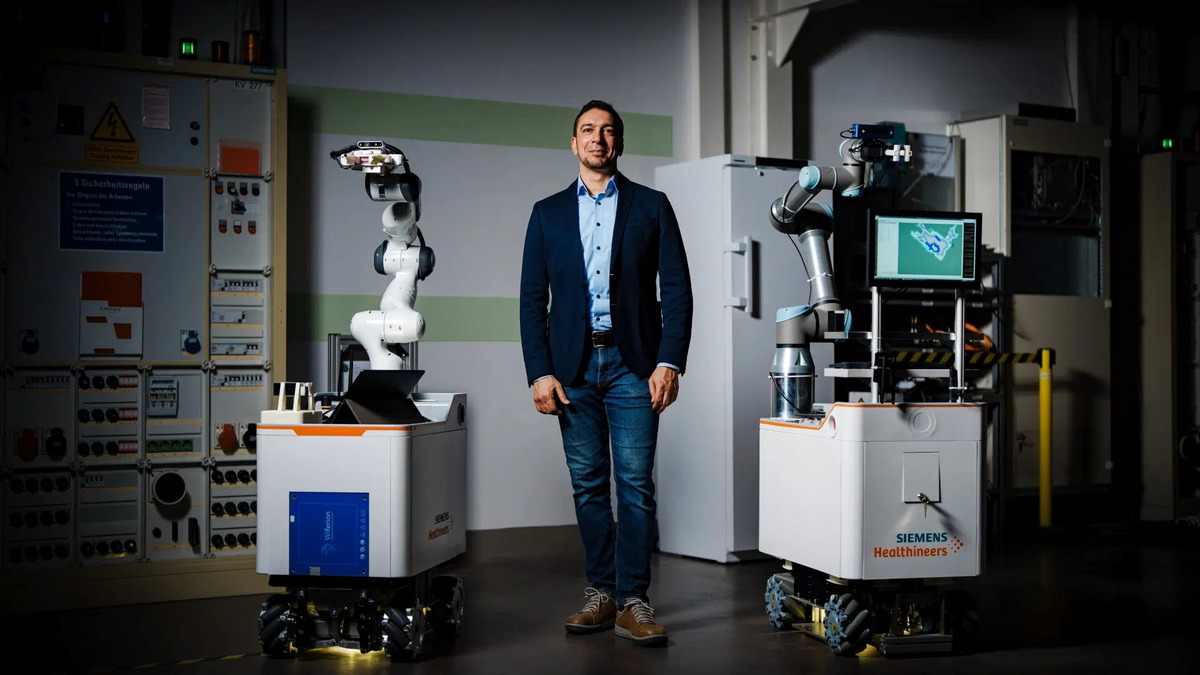The robotics innovator from Siemens Healthineers
At the innovation lab in Kemnath Engineer Chiheb Dahmani, PhD, and his team develop medical assistance robots that are intended to help hospital staff with routine tasks and allow them to spend more of their time on what really matters: Caring for their patients.
A contribution from Katja Gäbelein | Siemens Healthineers
“What fascinates me about working with robots is that if you just give them some training, they could do what you want autonomously,” Dahmani explains. “They are rather like children in that respect. We give them something to do and then they learn and do it. I really enjoy watching how it works.”
Chiheb Dahmani sounds almost like a proud father when he talks about the “Robbies.” This is what his team calls the prototypes of robotic medical assistants it is developing at the innovation lab in Kemnath, eastern Bavaria, Germany. Unsurprisingly, each “Robbie” also has its own name: Herbert, Patrick, Vanessa, and AURORA. Using common names like these of course also helps to maintain the confidentiality required in this kind of research projects. We are not allowed to say anything about Herbert and Patrick yet, but you can find out more about AURORA and Vanessa in this article.
Dahmani, who was born and grew up in Tunisia, is an enthusiatic medtech engineer. He became very interested in medicine at an early age: “As a child, I actually wanted to be a neurosurgeon. I was captivated by the whole idea, but it turned out to involve too much learning by heart,” he admits with a smile. He decided to take a different path in the medical field and become an engineer instead: “It’s important to me that my work helps people,” he reveals. After graduating from high school, he won a scholarship to study engineering at the Technical University of Munich (TUM) in Germany. There, Dahmani eventually gained a doctorate for his work on the use of magnetic nanoparticles in medicine.
Dahmani started his professional career with the Siemens Graduate Program (SGP), which aims to prepare young talents for a career at Siemens. Next came a series of different international posts in innovation, collaboration management, research and development (R&D), and market development at Siemens Healthineers, focusing on medical imaging solutions. He spent time working in France, Singapore, and Japan as well as Germany. Dahmani now leads the Technology & Innovation department at the Mechatronic Products division. He and his team of eight conduct research in a number of areas, including robot-assisted solutions for hospital workflows.
Artificial intelligence: A “rocket booster” for robot development
What is a robot? “In general terms, a robot is a system or machine that performs a task autonomously with a certain degree of precision and repeatability and needs programming to do so,” Dahmani explains. Artificial intelligence (AI), he adds, has put a “rocket booster” under the whole field of robotics. Machine learning enables robots to learn from experience and improve their capabilities continuously. Large language models, which are designed to understand and generate human language, enable people and robots to communicate in a more natural manner, for example using spoken commands. Computer vision enables robots to see as well as “understand” their environment.
“At Siemens Healthineers, we view robotics as a key technology for the future, not least to help address the severe shortage of specialist medical staff,” Dahmani says. Medical assistance robots equipped with AI could be used in care, diagnosis, and the operating room, for example. These engineered helpers could appear in a wide range of forms and perform numerous different tasks. However, their main role would be to assist with time-consuming routine activities, ranging from the self-driving patient couch and mobile C-arm that produces X-ray images in real time during operations to the transport of laboratory samples.
"Teamwork is essential in robotics. There is never any one person who knows everything and can do everything. Such a complex undertaking has to be divided up into subdisciplines. Specialists are required for each of these disciplines." - Chiheb Dahmani, PhD, Head of Technology & Innovation Mechatronic Products
Robot development involves engineers from the fields of mechanical engineering, systems engineering, electrical engineering, and electronics working together with experts in software architecture, data science, design, and user experience. Mechatronics engineers assemble the various components to create a prototype.
How do you develop a robot?
Collaboration between different in-house experts is just one of the necessary elements in developing a robot. The team usually also works with external partner companies from industry that specialize in particular components, such as cameras for example. Clinical collaborations are also important, Dahmani stresses: “Our clinical partners are able to use and trial the robots under realistic clinical conditions. The valuable feedback they give us is vital for optimizing robot performance.”
AURORA: A mobile robot assistant for the operating room
One of the most important research projects of recent years is AURORA, a cooperation between Siemens Healthineers and the Research Group Minimally Invasive Interdisciplinary Therapeutical Interventions (MITI) based at the TUM University Hospital, Munich, Germany. The project, which began in 2020, was financed by the Bavarian Research Foundation. It aimed to develop a mobile service robot for the nonsterile part of the operating room to assist the surgical team with the provision of sterile packaged materials and perform the role of a circulating nurse.
Dahmani says that with its integrated cameras, AURORA can already distinguish between people in sterile and nonsterile clothing and makes sure it does not move too close. People in sterile clothing, he explains, need to be given more space. AURORA will learn more in future too: “In the longer term, we want to integrate voice control based on large language models instead of gesture recognition.” Dahmani explains that this will require much more training, though. And the possibility of extending the AURORA concept to include use as a robot assistant in the catheter laboratory is also currently being investigated.
A robot assistant for the laboratory
Behind the name “Vanessa” lies another collaborative research project, this time with Helsinki University Hospital in Finland. Working with the hospital and external industry partners from United Robotics Group, Dahmani and his team tested various prototypes of a robot assistant for medical laboratories. In future, these might be used in conjunction with the , for example, which performs functions such as automating lab processes.
The robot could look after routine tasks in medical laboratories in future so that human staff can concentrate on other activities. Suitable tasks might include transporting blood samples or from one place to another.
You can find more exciting videos and information here:

© Markus Ulbrich / Siemens Healthineers

© Markus Ulbrich / Siemens Healthineers

© Markus Ulbrich / Siemens Healthineers



